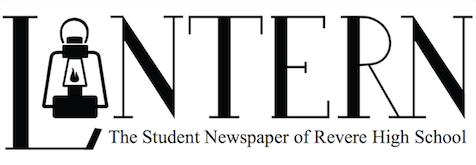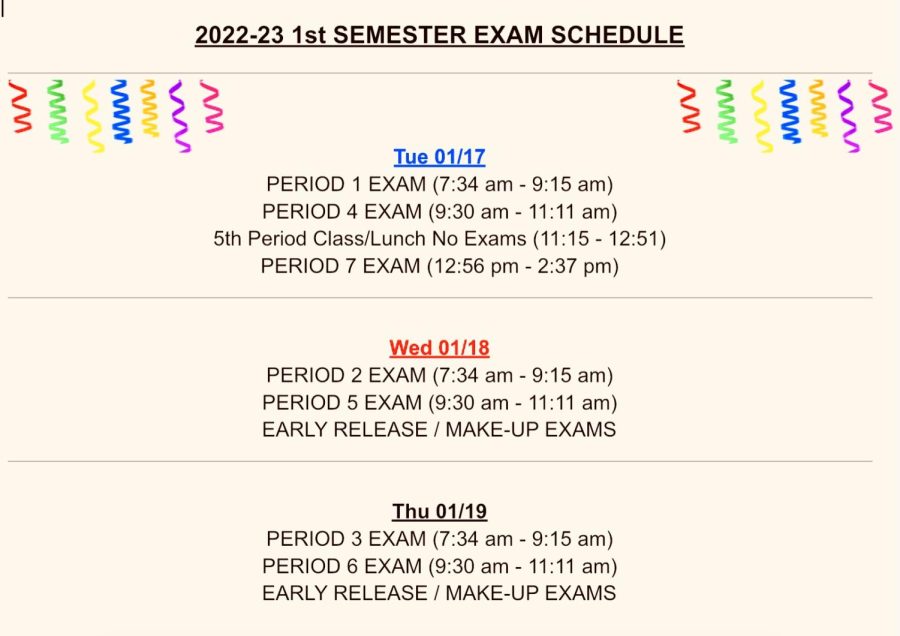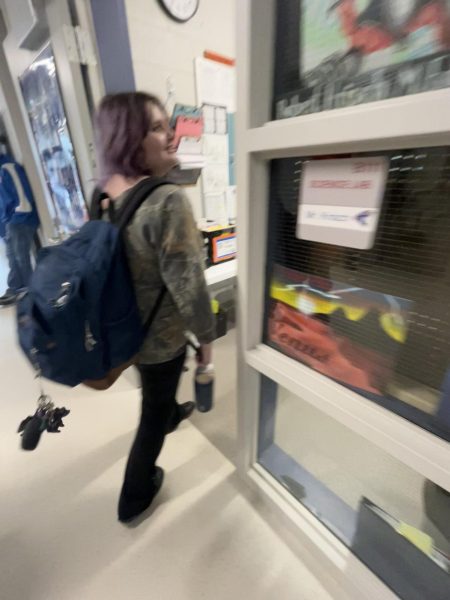Students take midterm exams
On the week of January 15th, students will take their midterm exams, tests that will count for 20% of their semester grade, over the course of three days.
Every year, students take a semester exam called a midterm for each of their classes that provide one. This year, the exams will take place the Tuesday, Wednesday and Thursday of the week of the 15th, giving students MLK day as a rest or study day. Friday students do not have school.
The purpose of exam week is to test students on the information they have learned thus far in the year. Principal Dr. Andy Peltz and Vice Principal Doug Faris both see these exams as great ways to document progress and comprehension throughout the year.
“It serves the purpose of testing the students’ knowledge, which helps teachers assess what students are learning and the areas in which they may need more help,” Faris said.
Peltz initiated the new system for exam week when coming to Revere because he believed that it worked well with students and also would help them in the future.
“Its model is similar to the collegian final exam schedule, so part of it is not only to show what you’ve done but also to prepare for college or university life too,” Peltz said.
The schedule set in place follows an open campus idea giving students the option to come in when they don’t have an exam. Tuesday will be the only full school day of the week and exams for periods one, four and seven will take place on that day. During fifth period on Tuesday, students will attend their normal fifth period class and lunch time. Exams for second and fifth period on Wednesday will be followed with third and sixth period tests on Thursday to finish out the week. According to Peltz, a lot of planning goes into choosing the dates for the midterm exams.
“We try to balance it for CVCC students as best as we can and also not overload people. So we don’t want to have four exams in one day, we just wanted to try and space it out as best we could. We also try to take a look at the number of days for the prep aspect too. We look at how we should set it up so people have time to prepare. Then we communicated with the department chairs and each one of the department chairs had the opportunity to reflect on if this is the best schedule and what we should do to make it better,” Peltz said.
While Faris and Peltz are a large portion of the decision on how the schedule is worked out, according to Faris, teachers also have the chance to weigh in on what they think is best for their students.
“We worked with our Building Leadership Team (our teacher leaders) to come up with a schedule that reduces the amount of stress on students but is efficient and can get completed within three days,” Faris said.
Exam week this year is very similar to last year as Peltz was happy with last year’s results. He enjoys the open campus environment, something students positively reacted to as well. Due to that positive response, the scheduling remained about the same this year. According to Faris there was one change with the addition of a small break in between tests.
“One of the biggest changes is we gave the students and teachers a 15-minute break between the 1st and 2nd exams each day. This was so we could all catch a little breather, use the restroom if needed, take a walk around the building if needed, and we now include the chance to get a snack from the cafeteria thanks to several parent teacher volunteers,” Faris said.
To both Faris and Peltz, exam week is an amazing opportunity to track growth and comprehension and should be taken seriously but with humility.
“My advice to all students is to make sure they take them seriously and do their best. The exams should definitely challenge you in a way that makes you even more prepared to take whatever your next steps are after you graduate. With that being said, one test shouldn’t define you so if you don’t do as well as you hoped, just shake it off and move on to the next one,” said Faris.
Peltz’s view was similar. He believes the exam should be seen as a celebration of all the work that has been put into the semester instead of something to endlessly stress about. It is a way to piece things together to see the full picture of what students have been learning.







